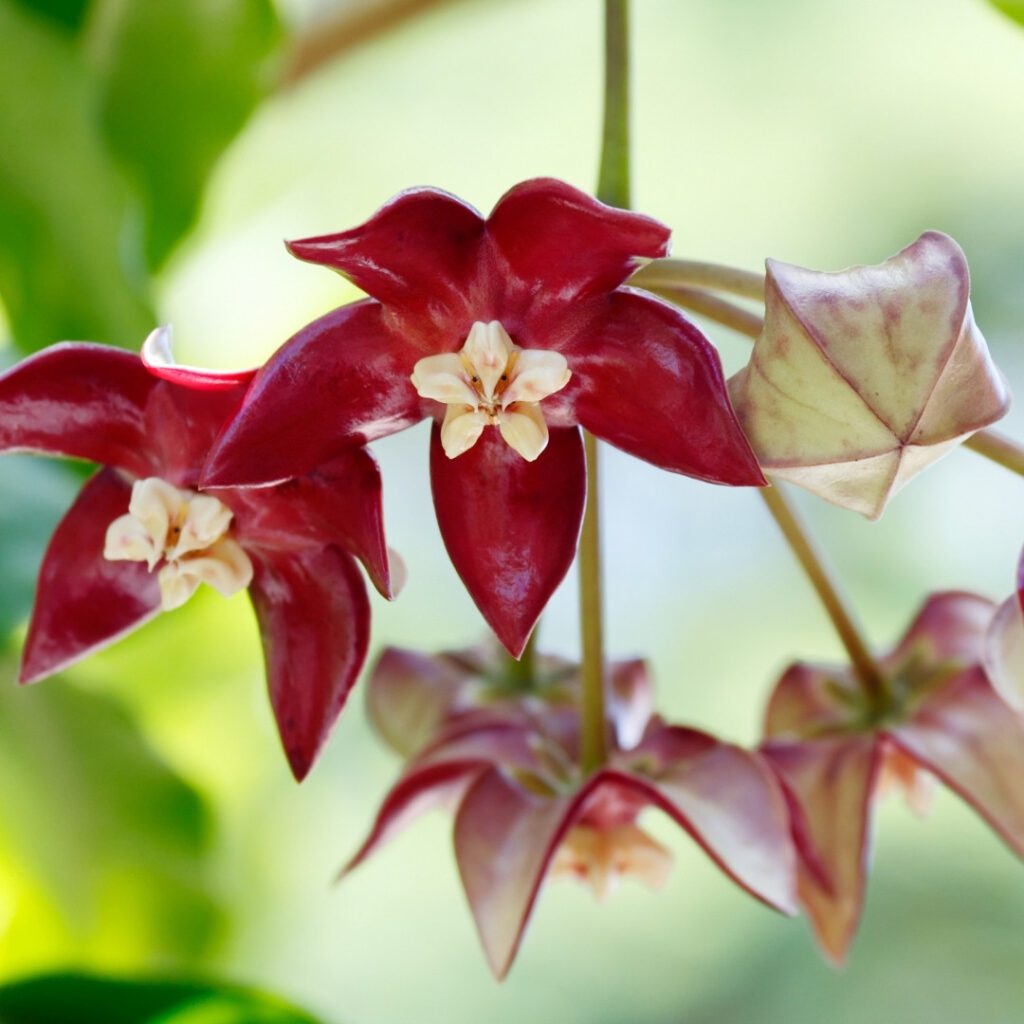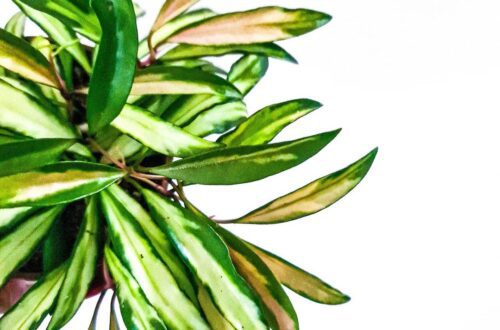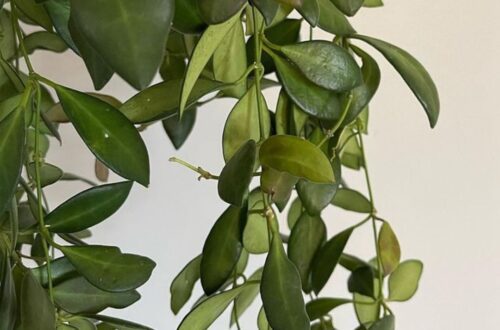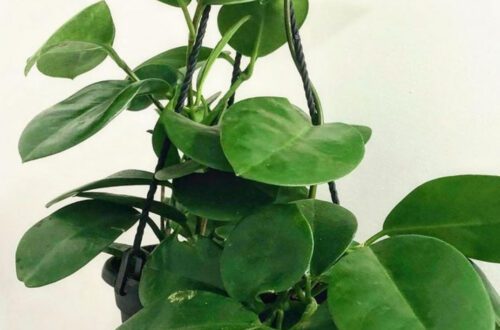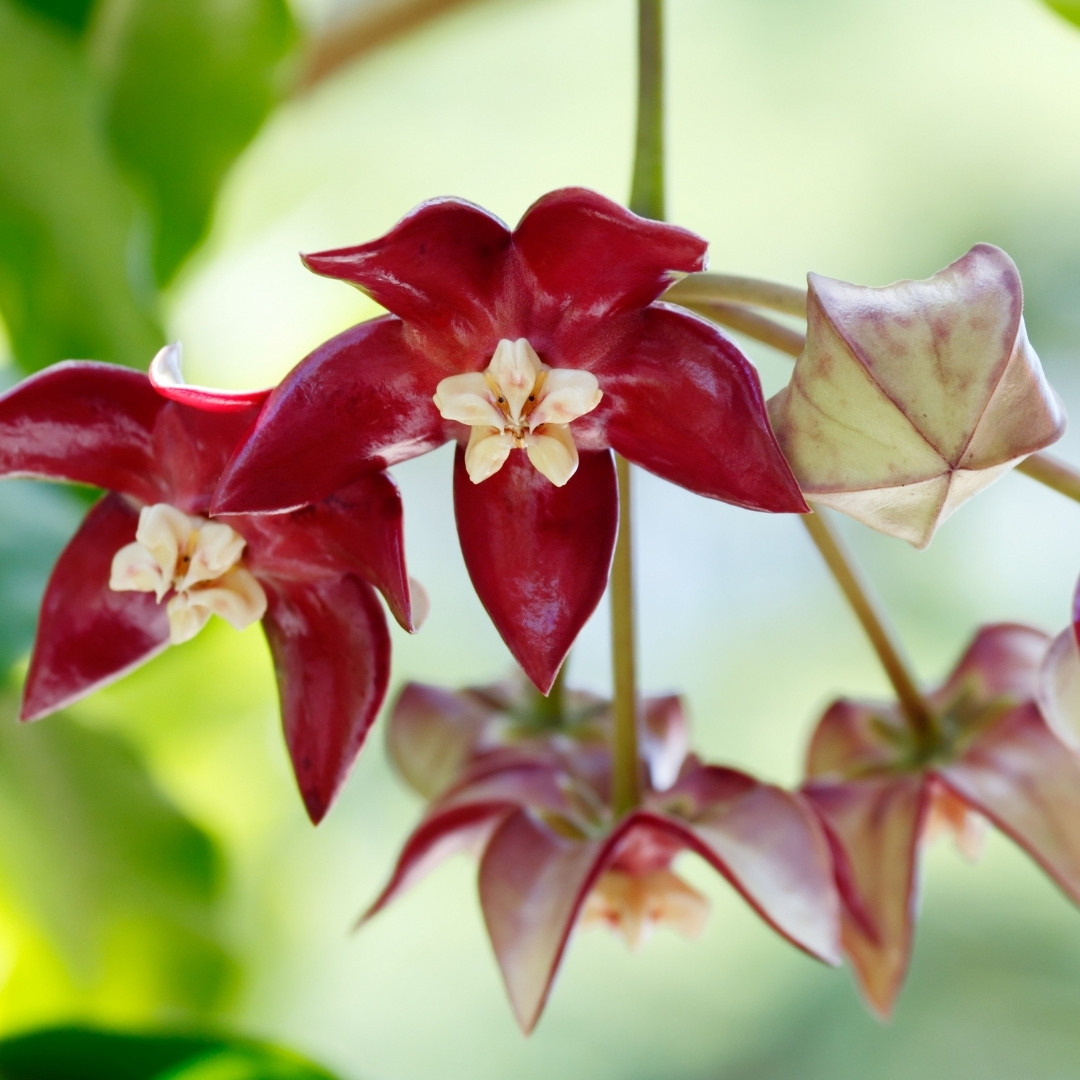
Hoya Imperialis
Welcome to our guide to the Hoya Imperialis care and propagation. The key to caring for this lant is to keep it in very well draining mix, and not to let the soil get too wet.
Hoya Imperialis Care Summary
| Light needs: | Medium to bright indirect light. |
| Watering needs: | Check soil once a week and water only if dry all the way down. |
| Fertilizer: | A balanced fertilizer once a month in the spring and summer. |
| Soil: | A mix of equal parts soil, perlite and orchid bark. |
| Humidity: | 60%. |
| Temperature: | 15-31°C (59-88°F). |
| Where to buy: | Try our list of Rare Plant Shops. |
| Common issues: | Overwatering and related root rot. |
Introduction
Originally from Malaysia, the hoya imperialis is an easy to care for hoya with big bold and beautiful shiny red/burgundy flowers, they grow fairly fast for a hoya too.. The flowers are a real show-stopper.
See also: Hoya Heuschkeliana, Hoya Kentiana, Hoya Serpens, Hoya Linearis, Scindapsus Treubii Moonlight, Hoya Lacunosa, Hoya Lauterbachii, Hoya Mathilde, Hoya Multiflora.
Tip: we recommend Etsy for buying plants. Look for the best rated seller you can, and try to buy as close to your home as possible so the plant does not travel too far.
A note about affiliate links: when you buy a plant, pots, soil, or other goods through links on this article we sometimes earn a commission. It doesn’t cost you anything, but it really helps us out if you do use them. Thanks a lot! An example of this is if you buy a plant on Etsy using this link. Read our privacy policy for more information. Thanks again.
Light Needs
Give your hoya imperialis medium to bright indirect light. They want good light to grow well and bloom.
How Often To Water A Hoya Imperialis
Check the soil once a week and water it only if it is dry all the way down. They do get root rot easily, so underwater rather than overwater.
Tip: they are fussy about watering: they don’t like to be overwatered or underwatered. So the best thing to do is check the soil twice a week and water it if it is almost dry. They don’t not want to dry out completely, but at the same time they don’t like to sit in wet soil.
Fertilizer
Feed your plant a balanced fertilizer once a month in the spring and summer.
Soil
The best potting mix for a hoya like this is a mix of equal parts soil, perlite and orchid bark. They should not be planted in normal potting compost as they’ll get root rot really easily. For on how to make your own hoya soil and the best potting mix see our guide here: Hoya Soil.
When To Repot A Hoya Imperialis
Hoyas are ok to be a little bit root bound. But check them every Easter, which is at the start of the growing season and pot them up a size if crowded. They will grow better if the roots have adequate space.
Tip: Give them a wooden trellis to climb up to encourage bigger leaf growth.
Humidity
Aim for 60% humidity for a hoya imperialis. They thrive if given the right humidity, but will tolerate much lower.
Temperature
15-31°C (59-88°F) is a good range for them. I would aim for about 25°C (77°F) in the daytime for best growth and blooming. Try to keep them above 10°C (50°F) at night or in the winter.
Hoya Imperialis Origin
The hoya imperialis originates from Thailand, Malaysia and surrounding countries (source).
How To Propagate Hoya Imperialis
You can propagate hoya imperialis by taking cuttings from the stems that include at least 2 or 3 nodes, and there must be leaves growing from the top one or two nodes. Take the leaves from the bottom node, then leave the cutting for a few hours so that the wounds heal. You can then put the cutting in water to root. Keep it warm, humid and well lit (but no direct sun) and it should root over the coming months. Once rooted, pot it up into soil and then treat it as a juvenile plant.
hoya imperialis USDA Zone
Zone 10.
hoya imperialis vs hoya carnosa
The main difference in these plants is the flowers, the imperialis has big oversized flowers.
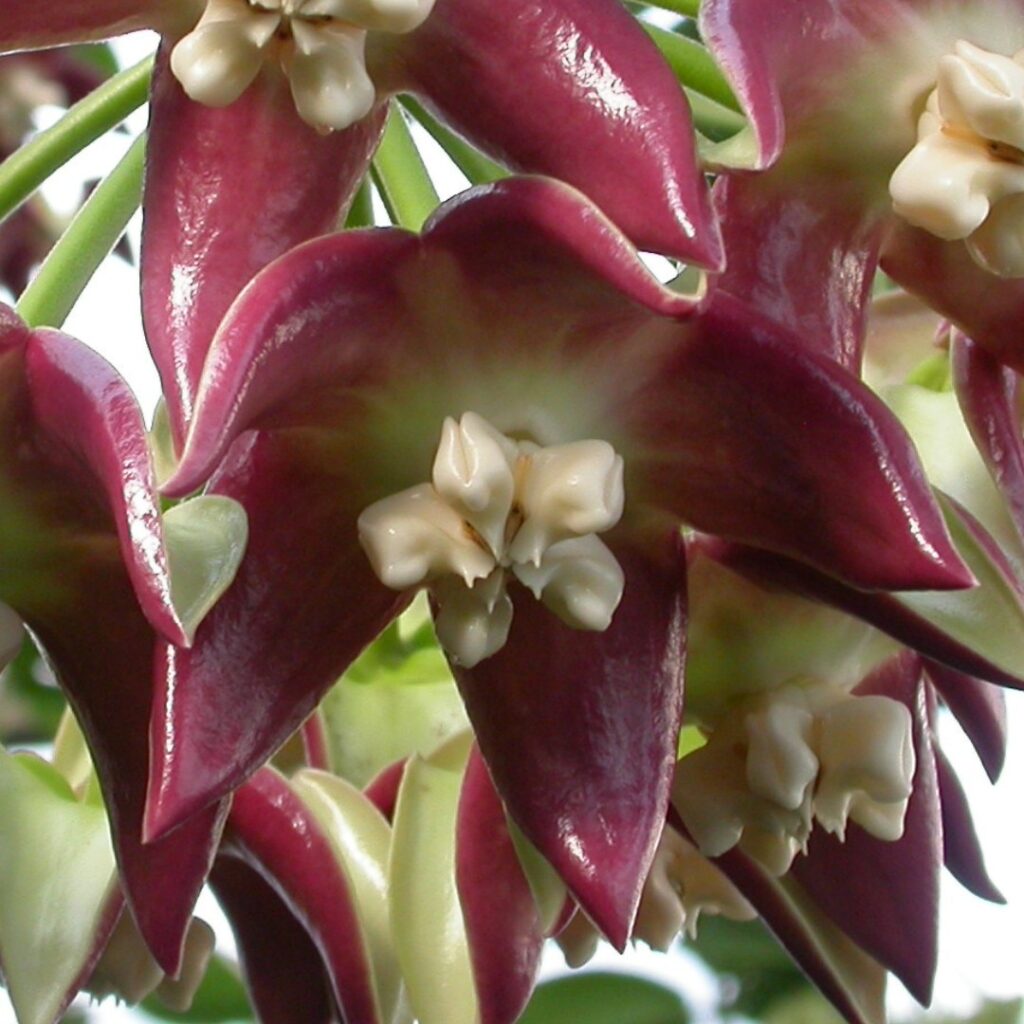
Hoya Imperialis Flower
They have really impressive, oversized burgundy flowers, that grow in clusters like most hoyas but are bigger and bolder.
Tip: To encourage flowers, give them bright light, 60% humidity and temperature of 25°C (77°F) if you can.
Is It Toxic To Cats?
Hoyas are non-toxic to dogs and cats.
Where To Buy
Try our list of Rare Plant Shops.
FAQs And Common Problems
Common problems with hoyas like this are overwatering, they must not be overwatered and make sure you have a really well draining hoya mix too, to avoid the roots sitting in wet soil.
Additional Resources
Links:
- More info on the Kew Gardens plant page.
- More info on the RHS plant page.
Other Articles You Might Like
Hope you found this guide useful, you might also like our other articles: Hoya Linearis, Scindapsus Treubii Moonlight, Jessenia Pothos, Philodendron Camposportoanum Care.
Follow us on Instagram and Pinterest for regular plant updates and occasional plant giveaways.
